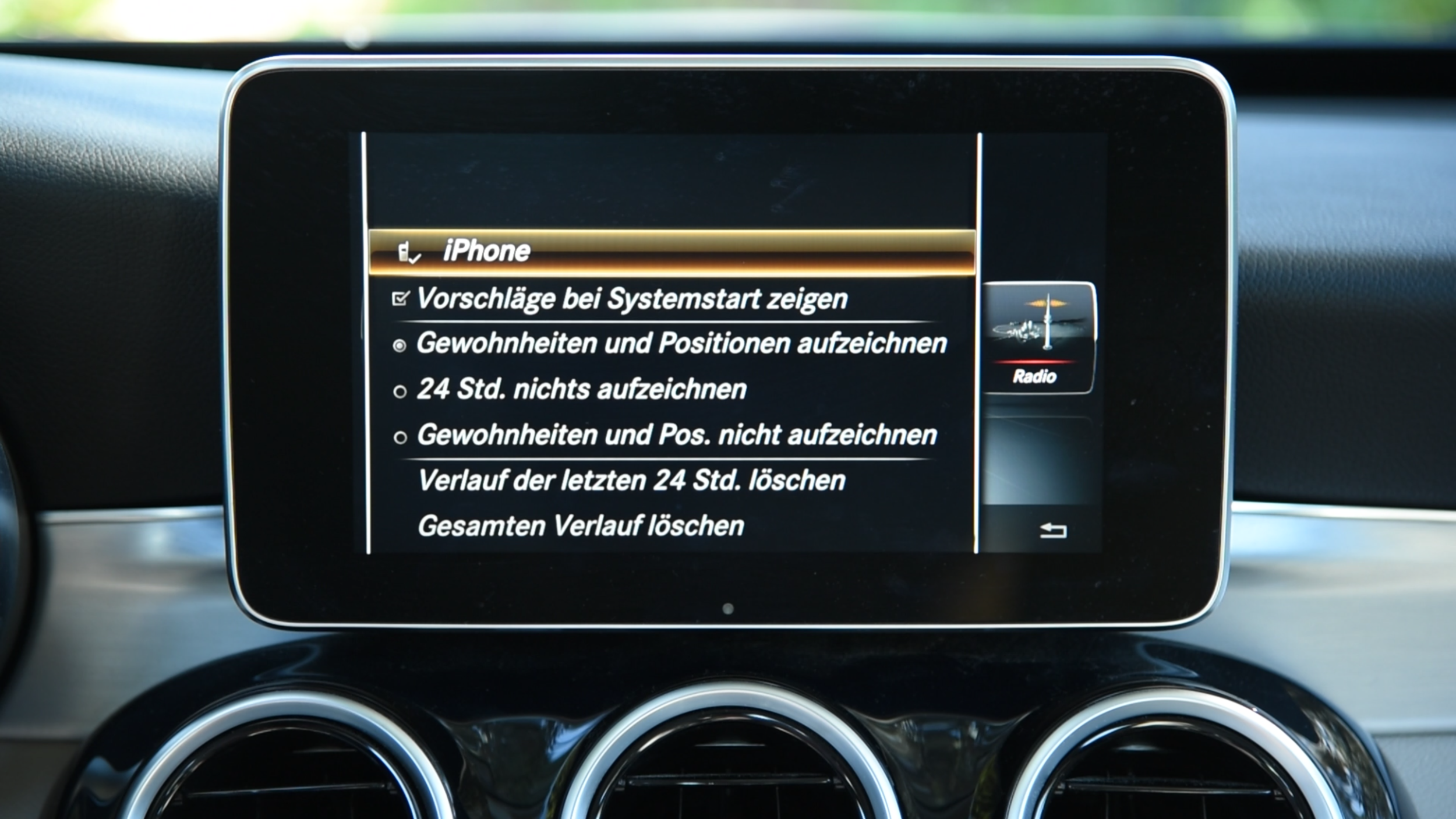Machine Learning
Machine Learning
Mercedes-Benz R&D North America
Driver distraction is a real issue. In order to simplify and reduce interaction steps with the telematics system, Mercedes-Benz R&D North America developed a prediction engine.
While using the system in the car it learns the habits and preferences of the driver and will start providing meaningful predictions to the driver. These predictions are presented as shortcuts to the user, allowing a simple and fast interaction.
Through these shortcuts the driver can start route guidance, initiate a phone call or switch to a different media source with just a single tap.
AI-based features in the model year 2018 C- and E-Class. The software studies user behavior to make personalized predictions for navigation destination, entertainment and media source or phone numbers that user usually calls.
Scope
Collaboration
UX Designers, Society & Technology Trends Researchers, UX Researchers, Machine Learning Engineers
UX concept & principles
Interaction concepts were created for adding machine learning suggestions to
Research
User interviews were conducted and used to develop personas. During this research core user needs emerged – the majority of these can be addressed by integrating machine learning in the form of suggestions in the vehicle system.
Suggestions – Rationale
support the user
offer information or actions when and where needed to simplify
the interaction steps necessary to successfully complete a task
touch of magic
by integrating intelligence deeply into the core system we can achieve a simple, positively surprising and fun to interact with user interface that adds a touch of magic to the system
affective experiences
can be created by (seemingly) understanding the user’s
actions and intent and offering
a personalized experience
Content & Context
In order to define when and how to provide suggestions to the user we explored what content would be helpful to users in which context. With a card sorting exercise we were then able to further define how the suggestions should be provided to the user – global suggestions, in-app (local) suggestions, interactive notifications or automated settings.
Ideation
Since this feature is and will be part of a lot of different generations of infotainment systems a lot of concept directions were explored with white boarding sessions, paper pencil sketches and lo-fi prototypes. Each infotainment system generation has vastly different interaction concepts, so different concept directions had to be explored for the different systems. This is just a very small subset of early concept explorations.
Decision point. We prioritized the idea sketches based on the criteria of what kind of experience we want to achieve by having suggestions (rationale) and the content-context mapping for how suggestions should be provided to the user. As a results, we were able to define UX principles that provide guidance on how to integrate suggestions. These principles can be applied independently of the underlying operating system.
UX Principles
During ideation and testing of several concepts UX principles were developed that were used to further define how to surface suggestions throughout the different infotainment systems. The UX principles for suggestions were also handed over to our series development partners as reference for further independent concept development.
make it easy
using any intelligent feature should not show the complexity behind the technology, but rather offer the user an easier way to complete tasks
| suggestions as shortcuts to
frequently performed actions
| automatic adjustments for invisible
support
make it discoverable
for suggestions to be useful, users should be able to stumble upon them while using they system – suggestions hidden in a menu don’t add value and defeat the purpose
| in-app “stumble upon” suggestions
| contextual infos and actions as
interactive notifications
make it mine
While supporting users proactively in achieving their goals they should feel in control at any time and have the ability to make decisions for themselves
| settings for data tracking
| trust building interfaces for
autonomous driving
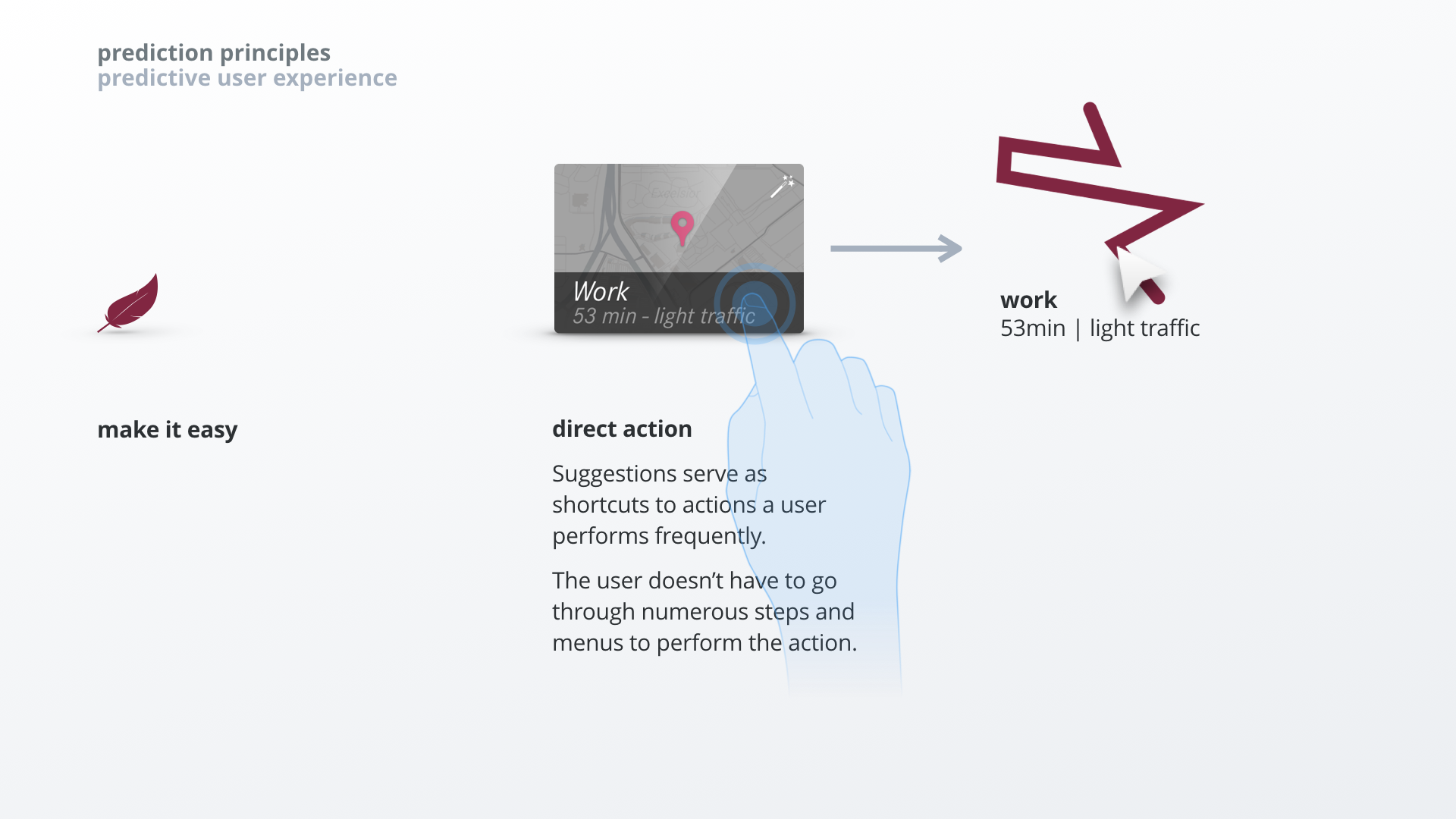
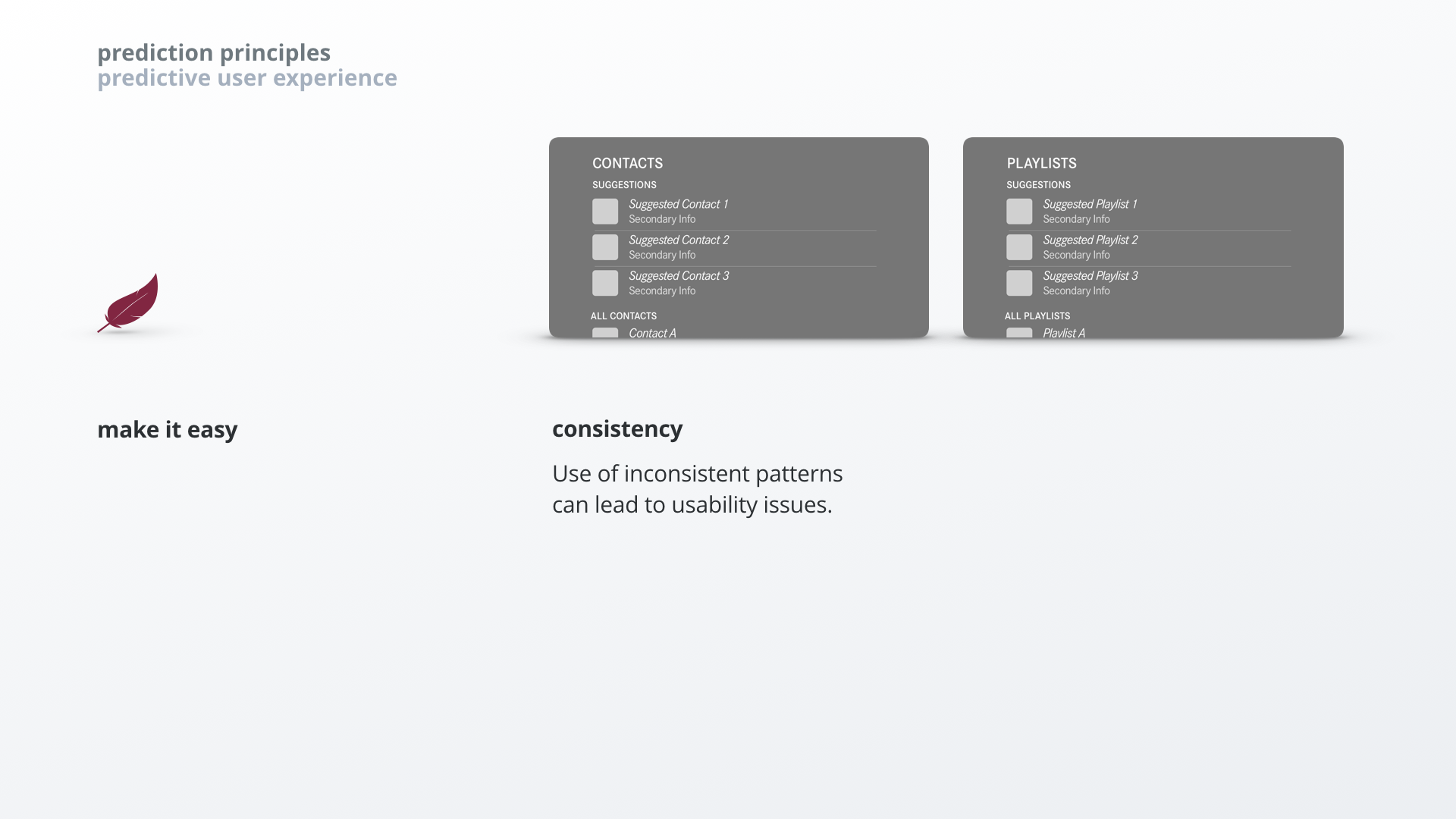
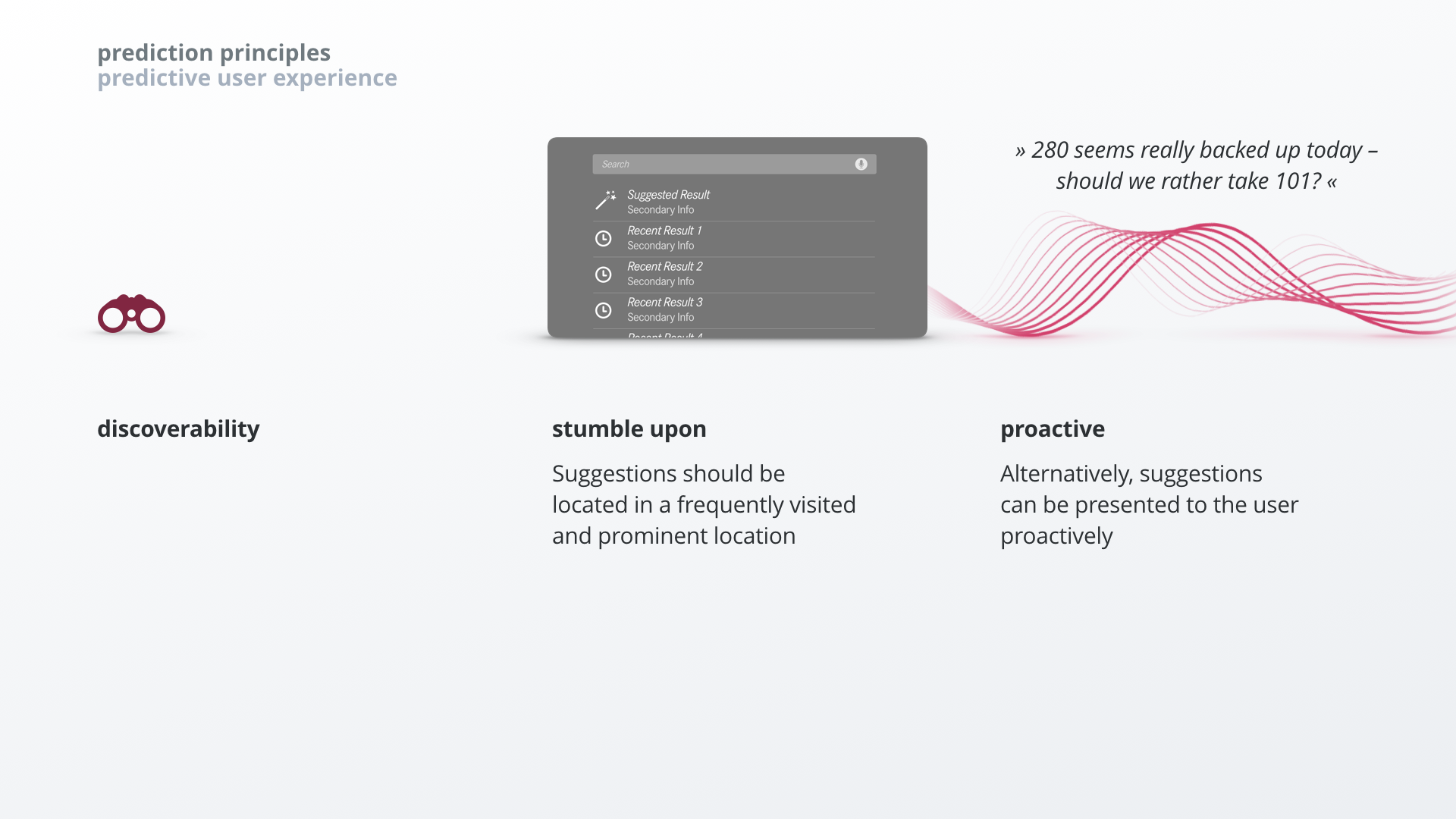
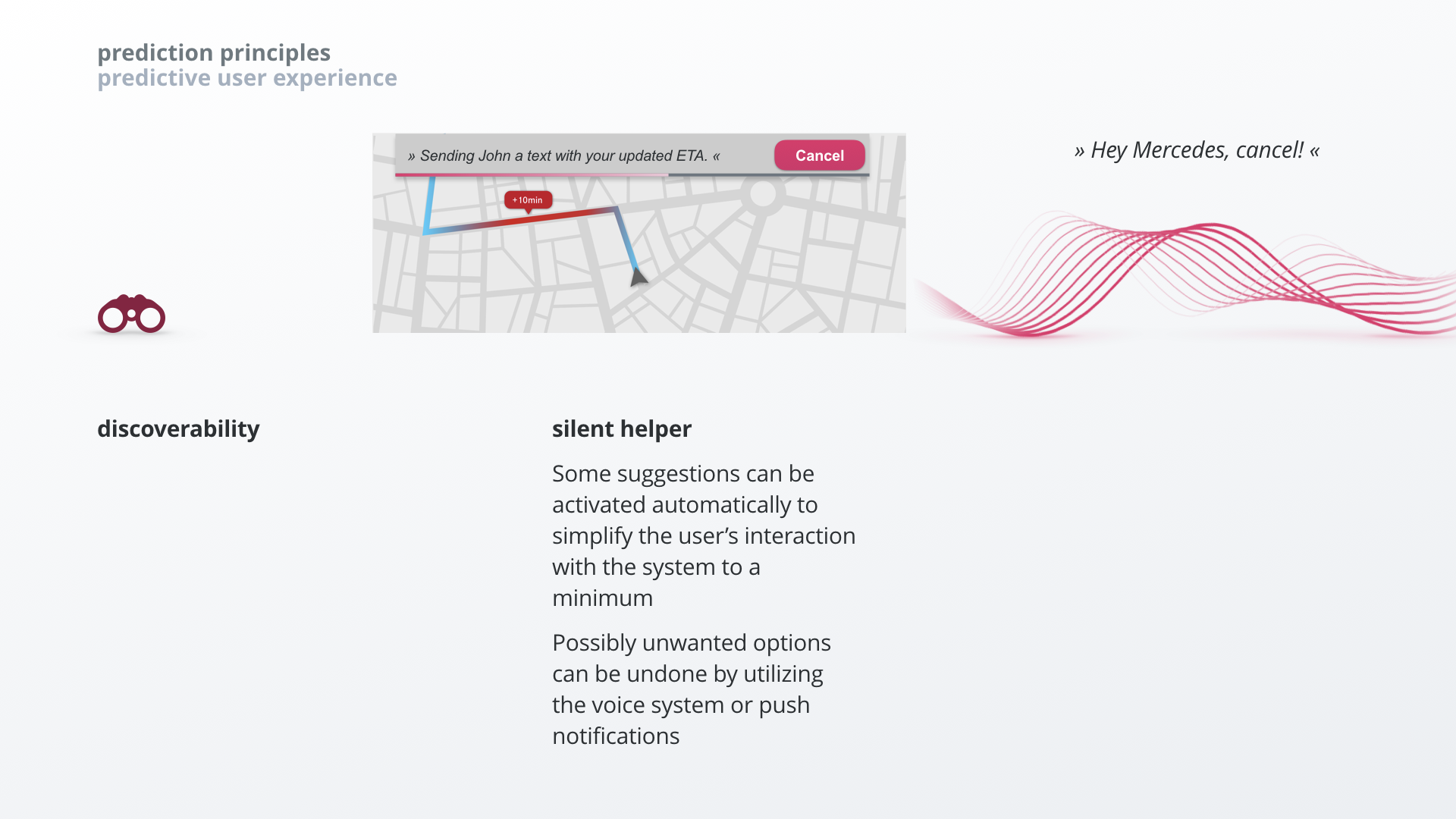
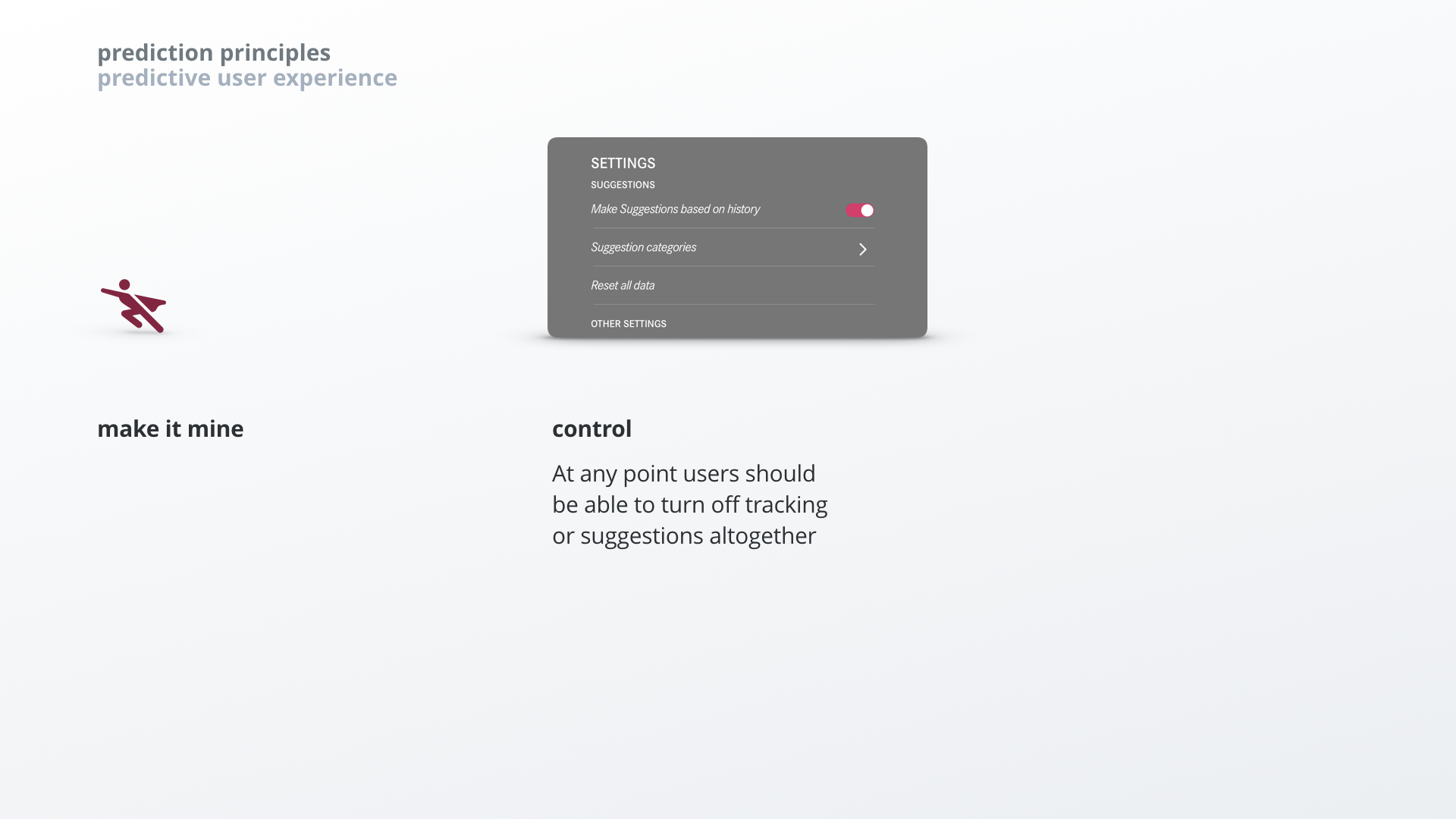

Predictive User Experience
C-Class MY 2018
Integrate predictions for destinations, contacts, media- and radio sources in an existing system that's already on the market. The main stakeholder requirement was to keep change to the existing system to an absolute minimum in order to keep implementation time and costs down.
Challenge
The challenge was to apply the developed UX principles while keeping changes to the system to an absolute minimum. Suggestions were integrated in the existing favorites menu. Both features are similar in nature, so layout and interaction could be designed consistently.
Interaction Flows
There is no touchscreen in this generation of the C-Class. The user can control the system using either a rotary control or a touchpad – and in some cars both.
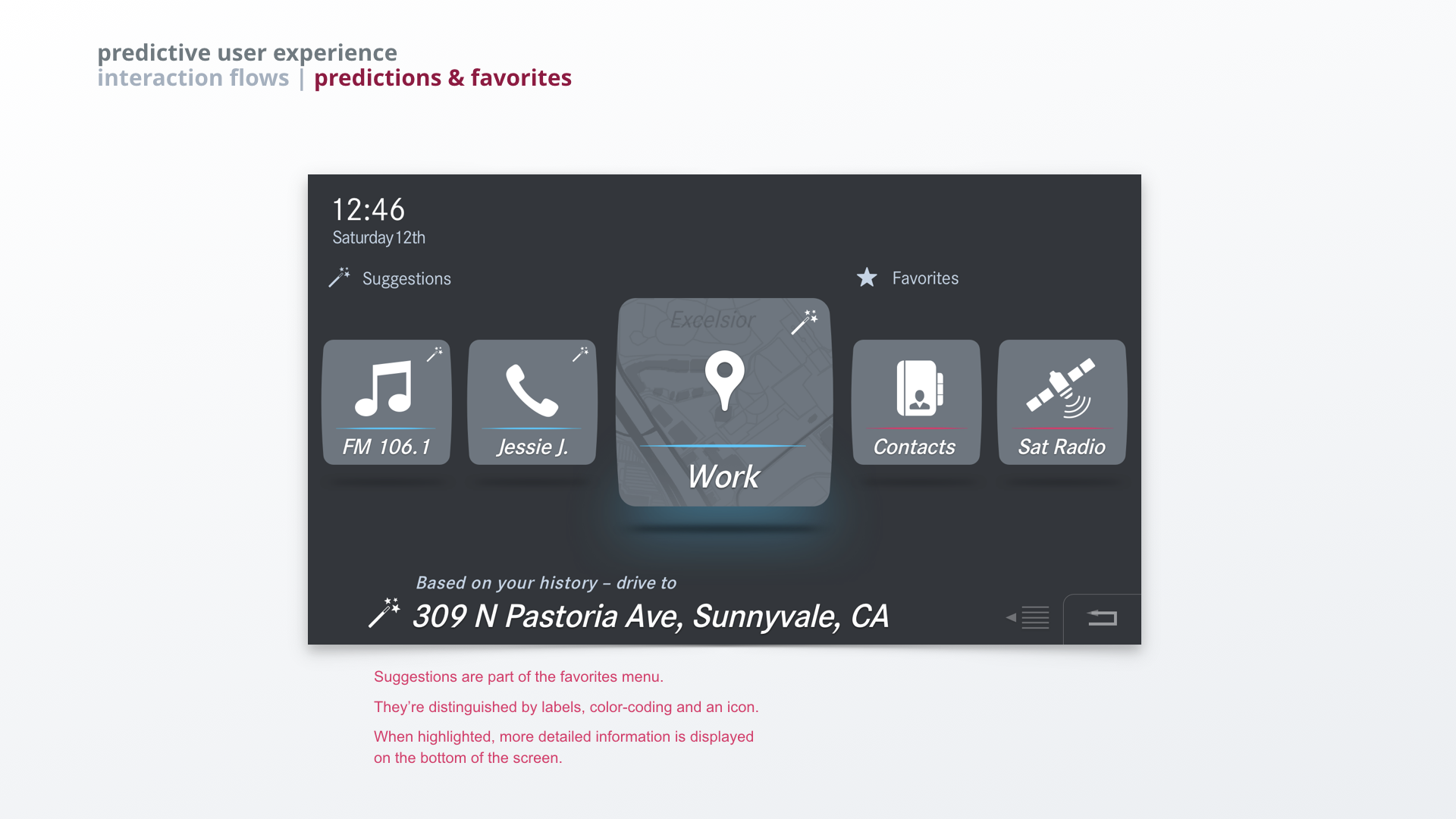
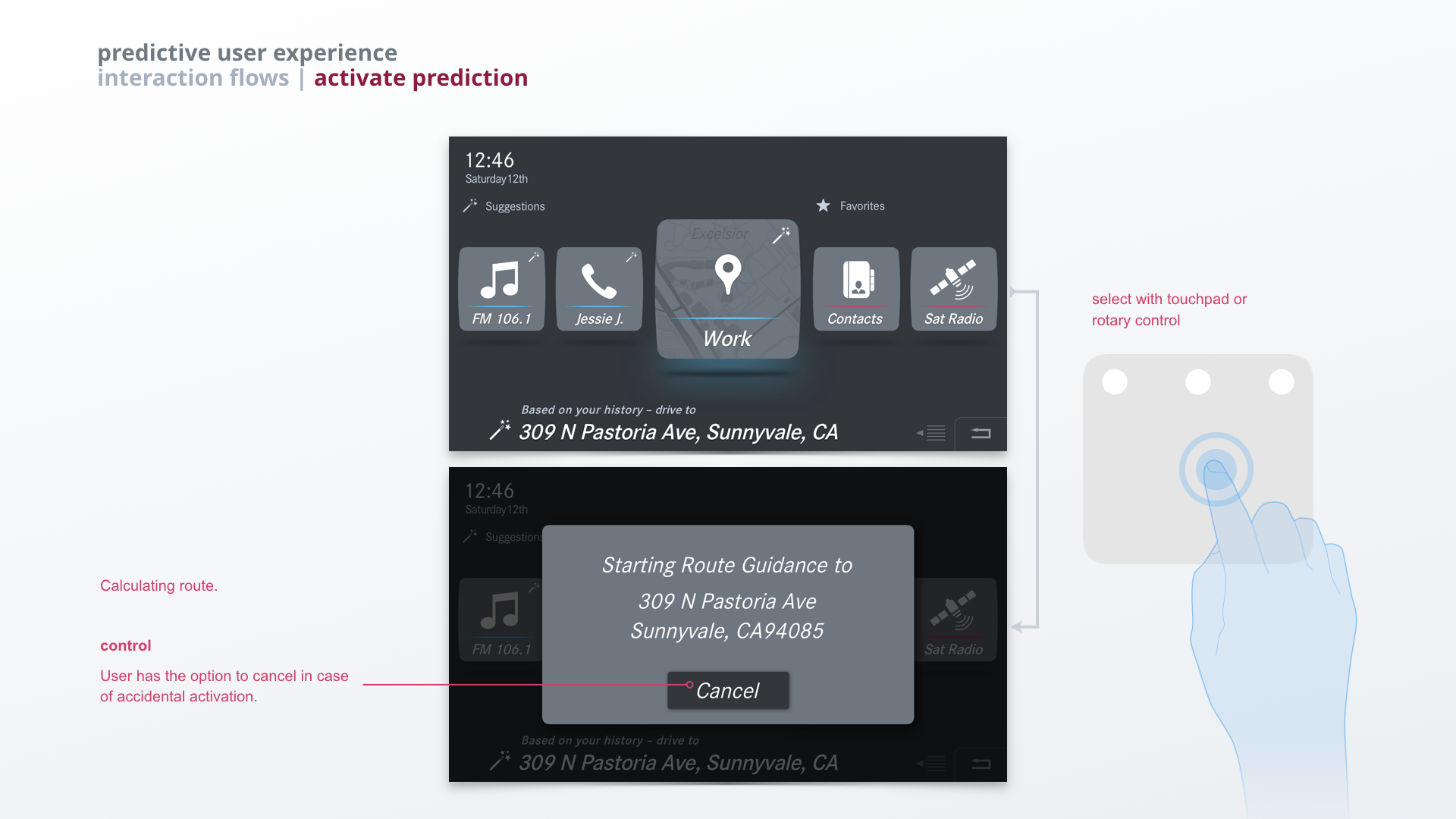
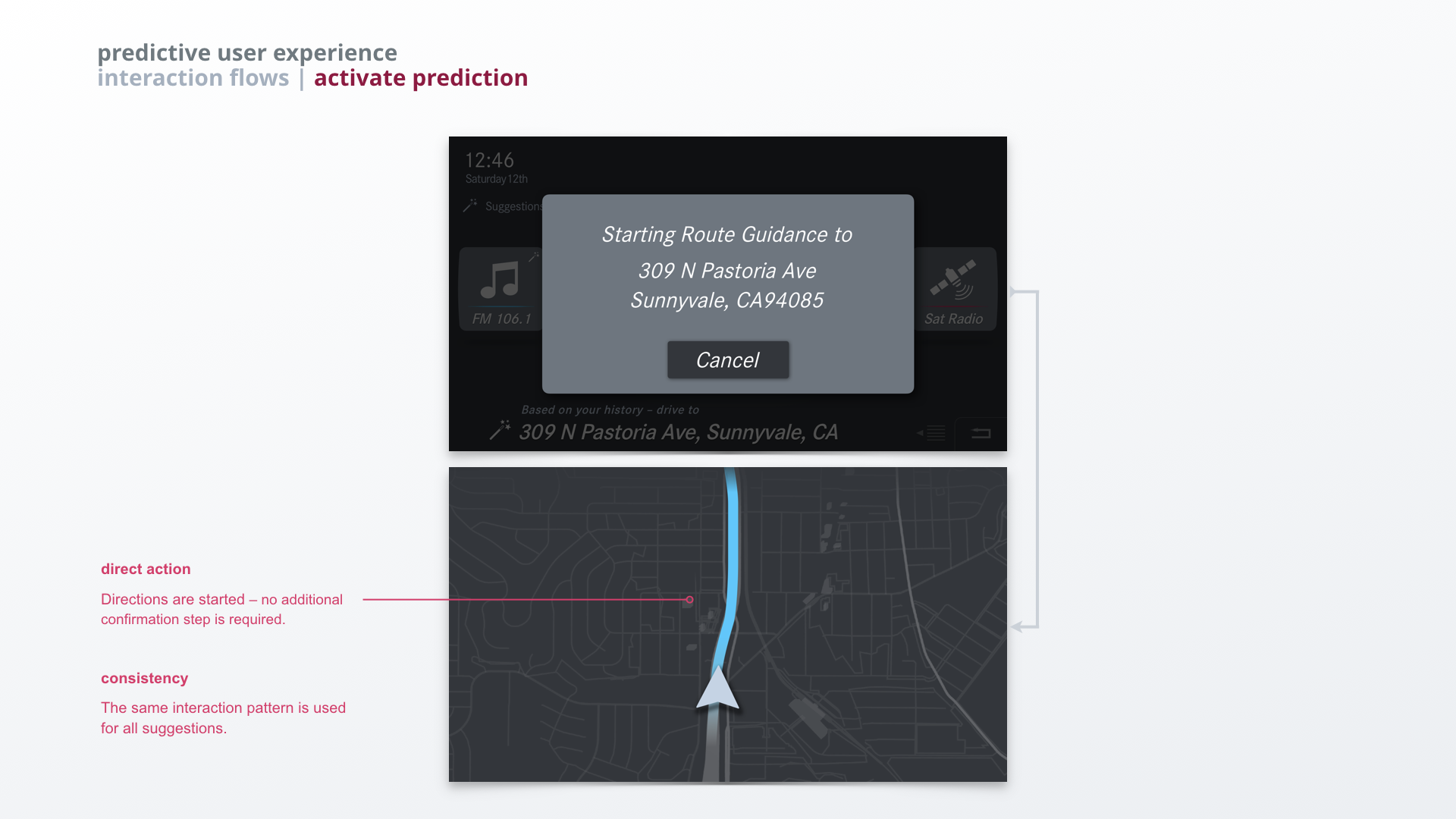
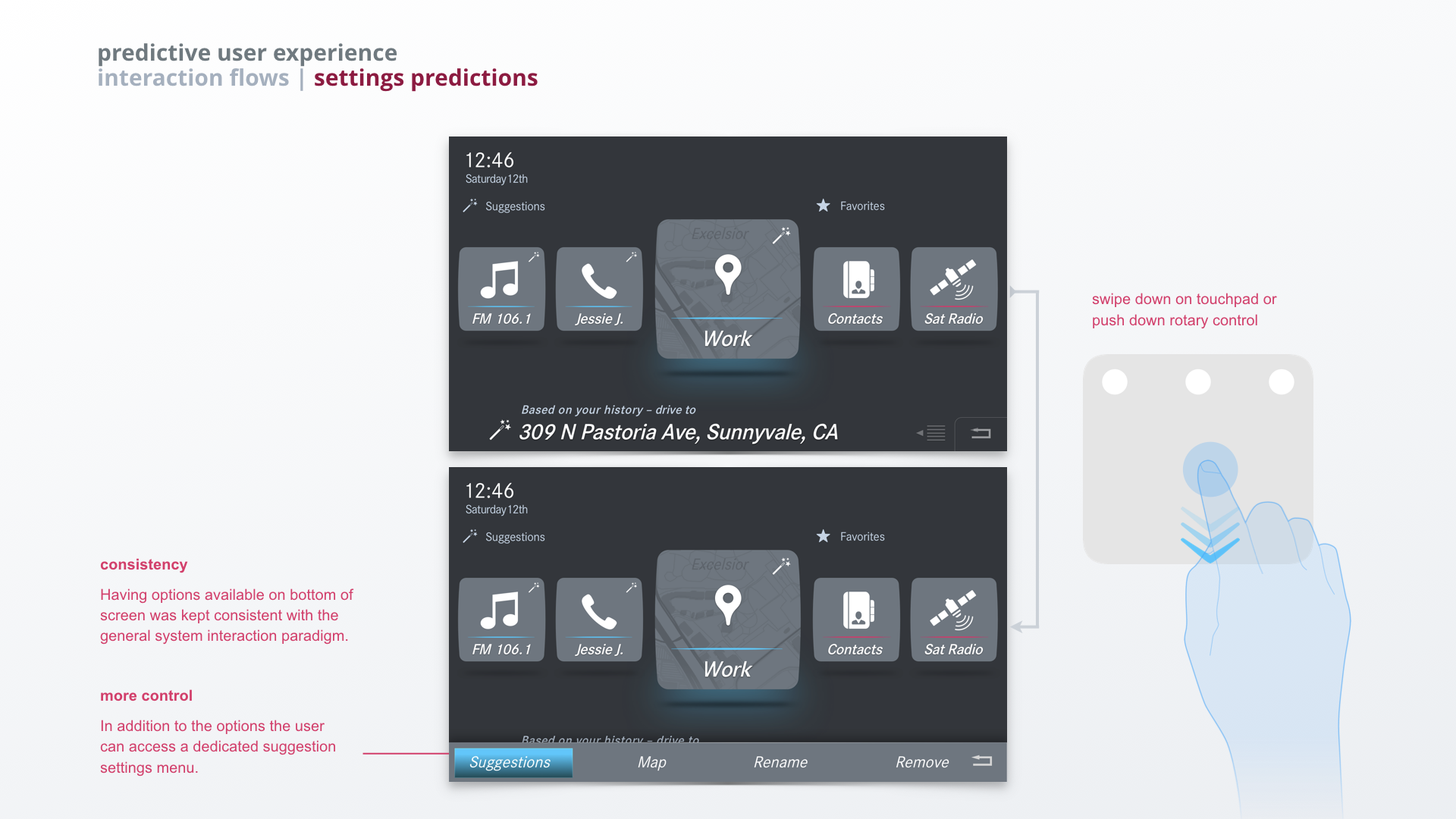
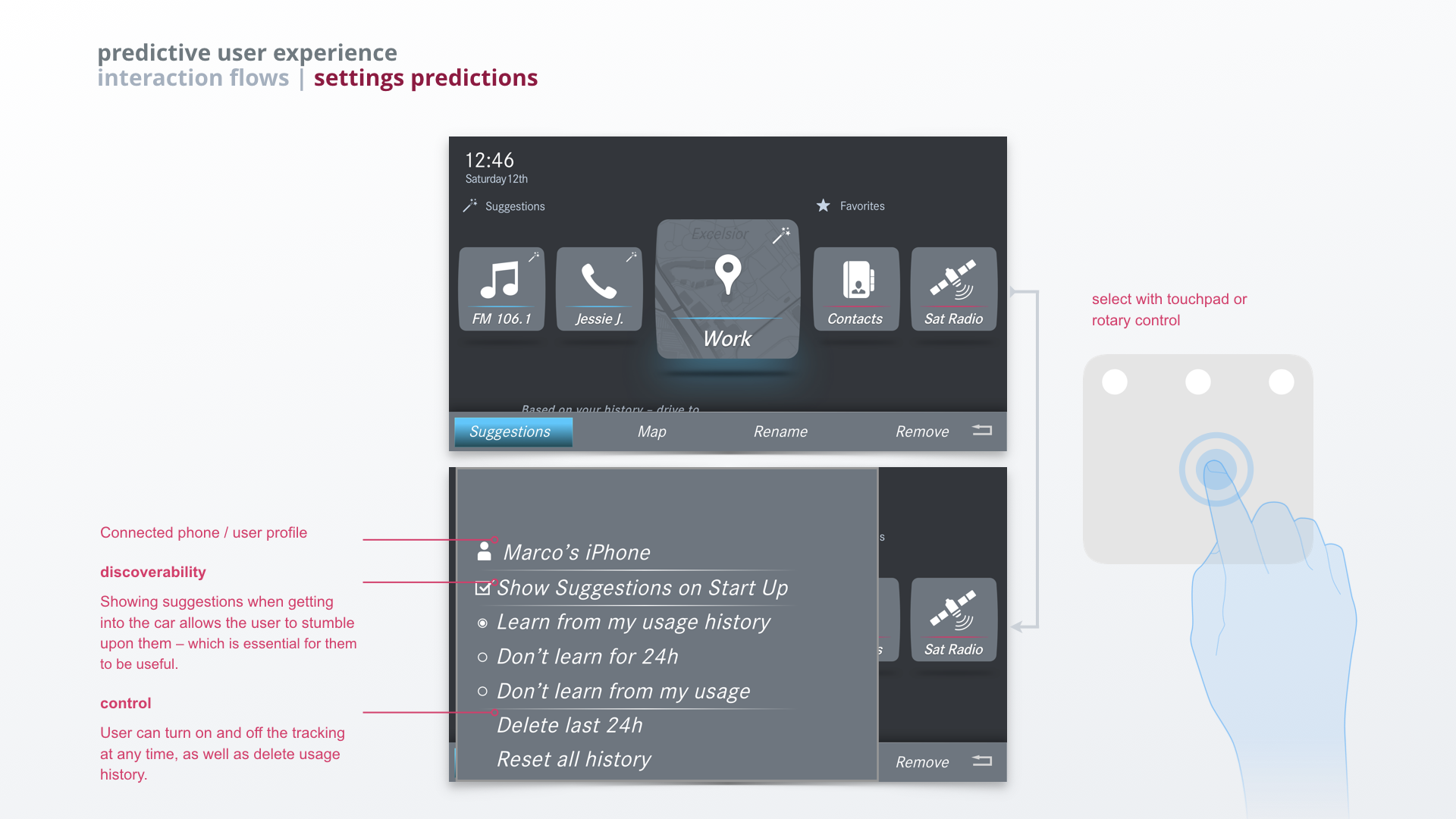
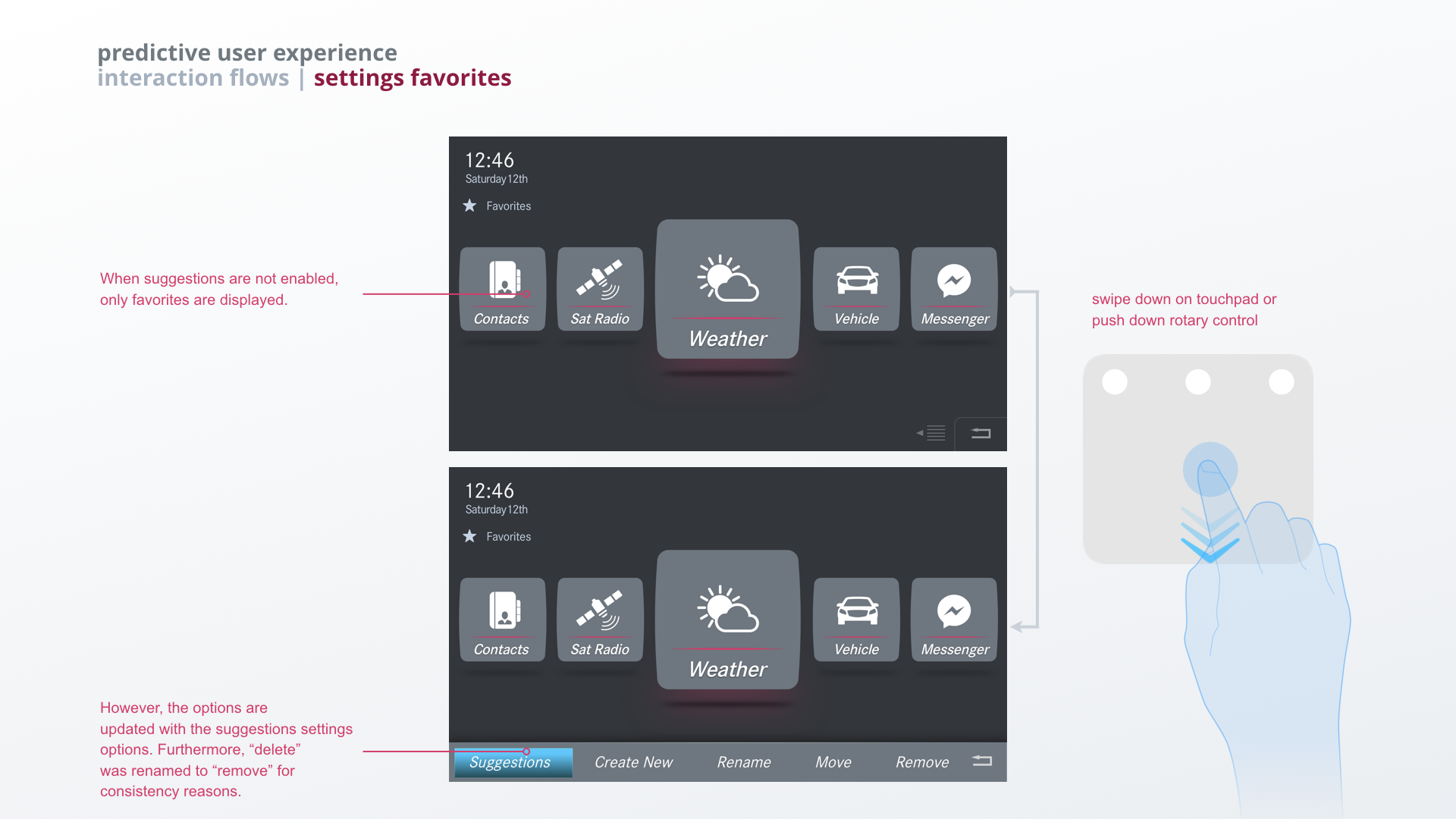
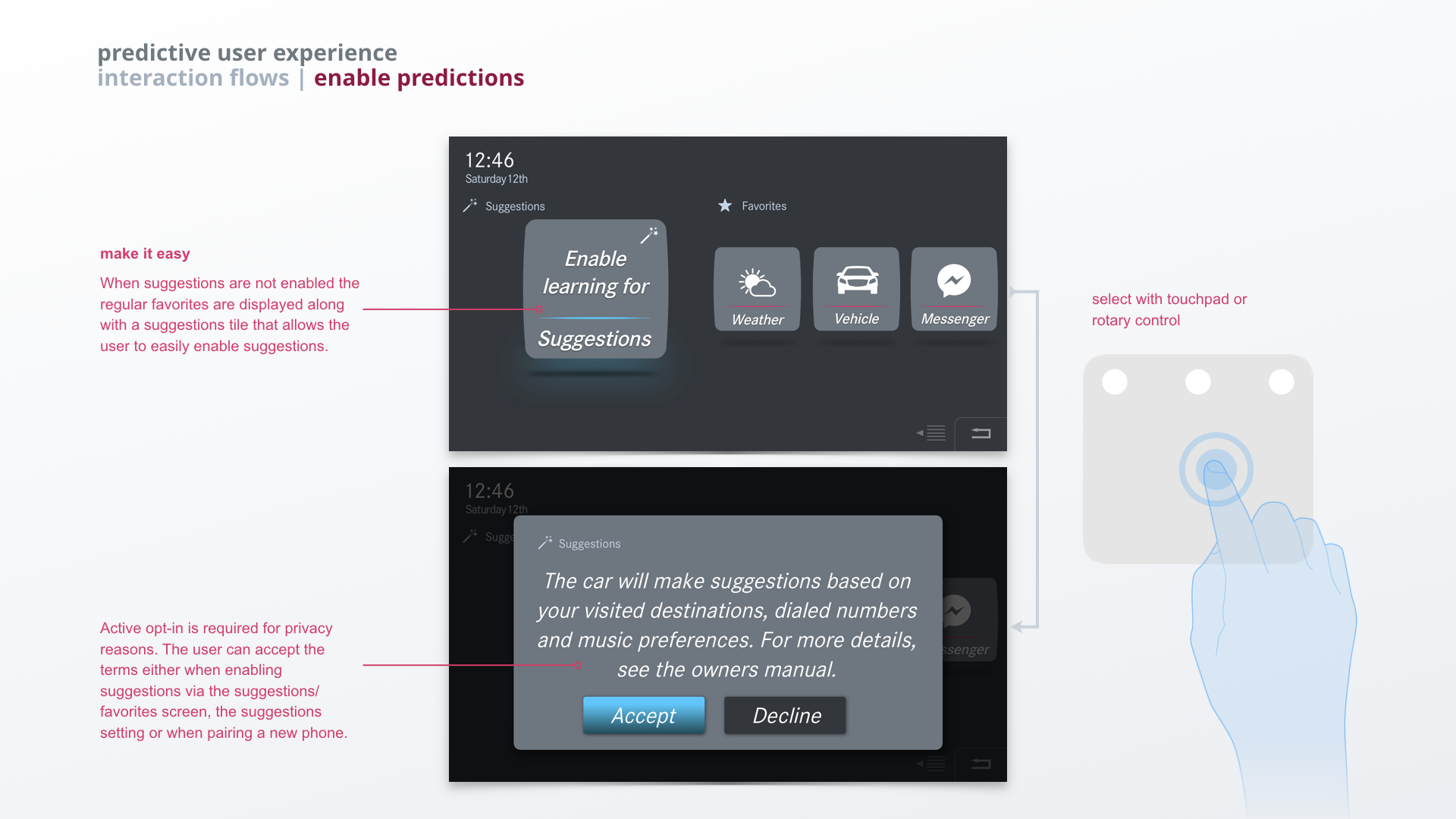
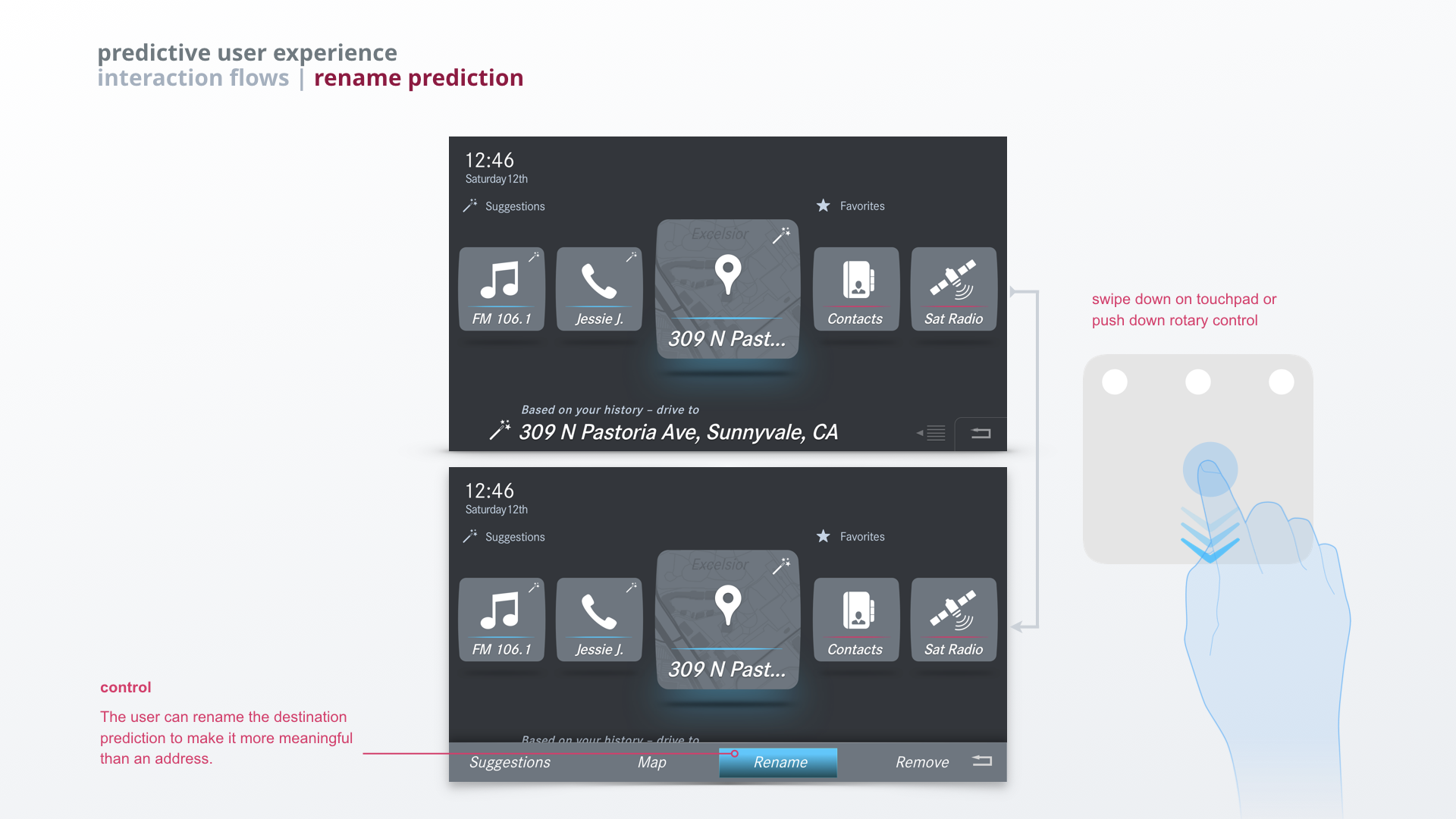
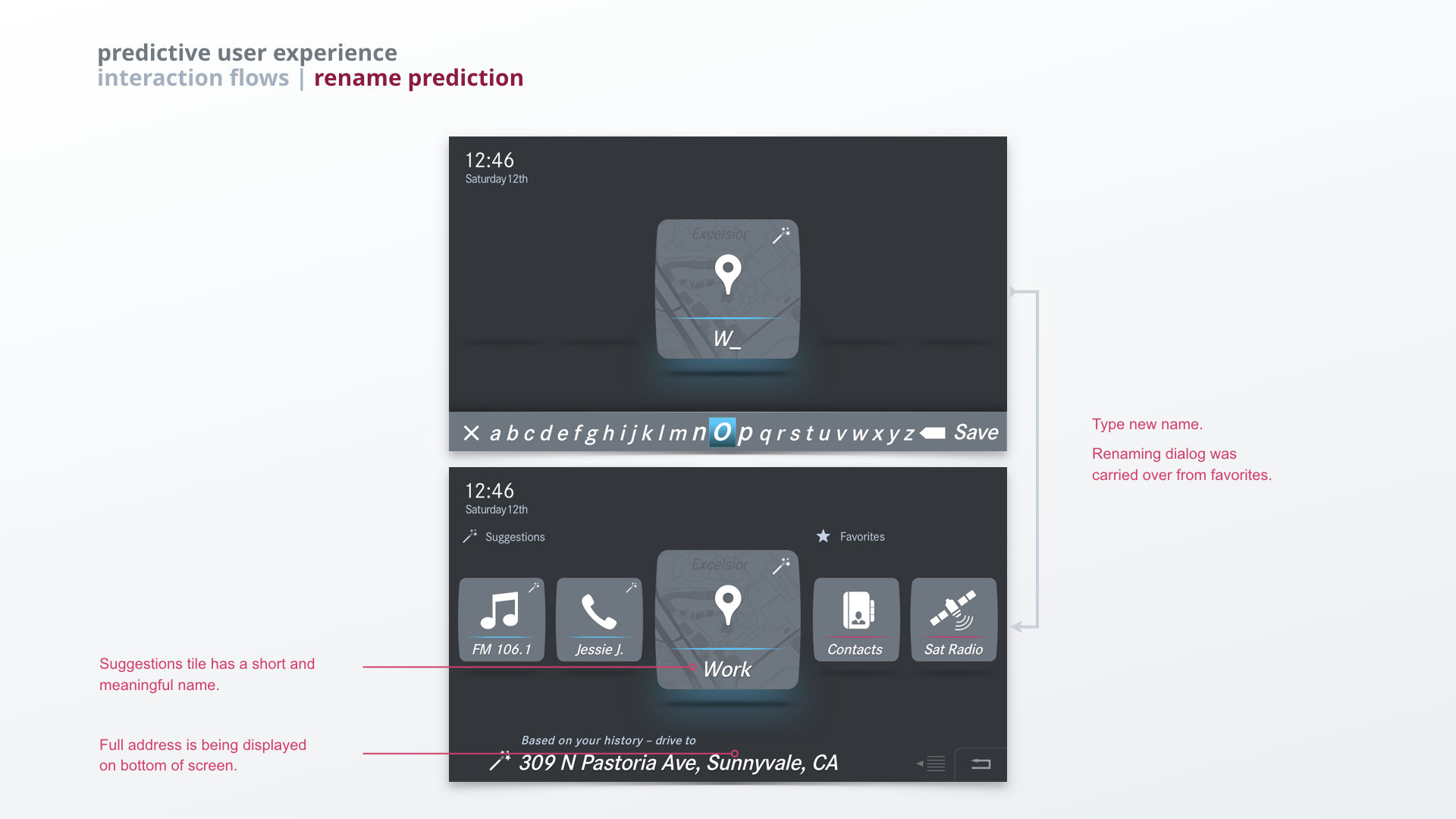
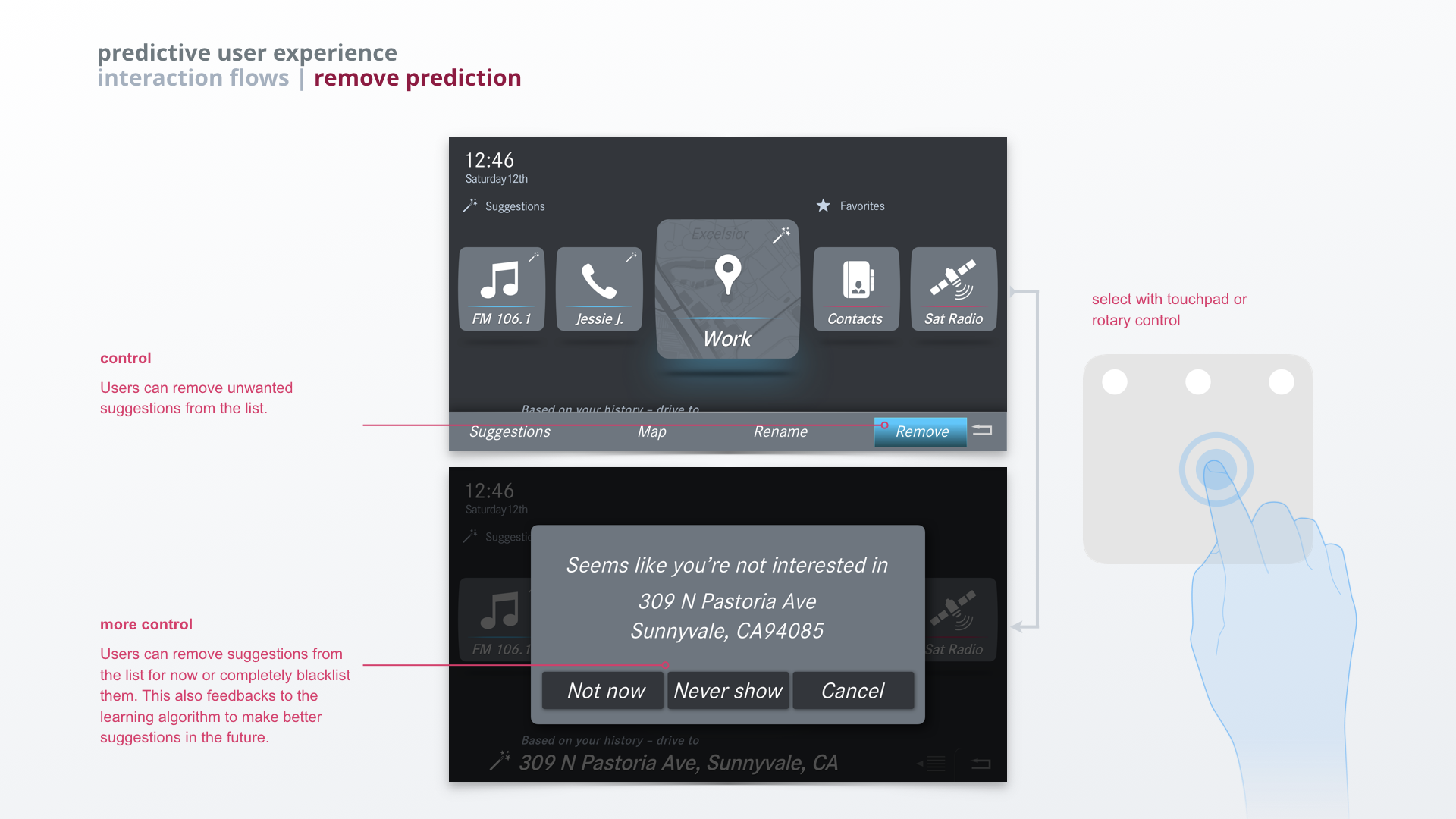
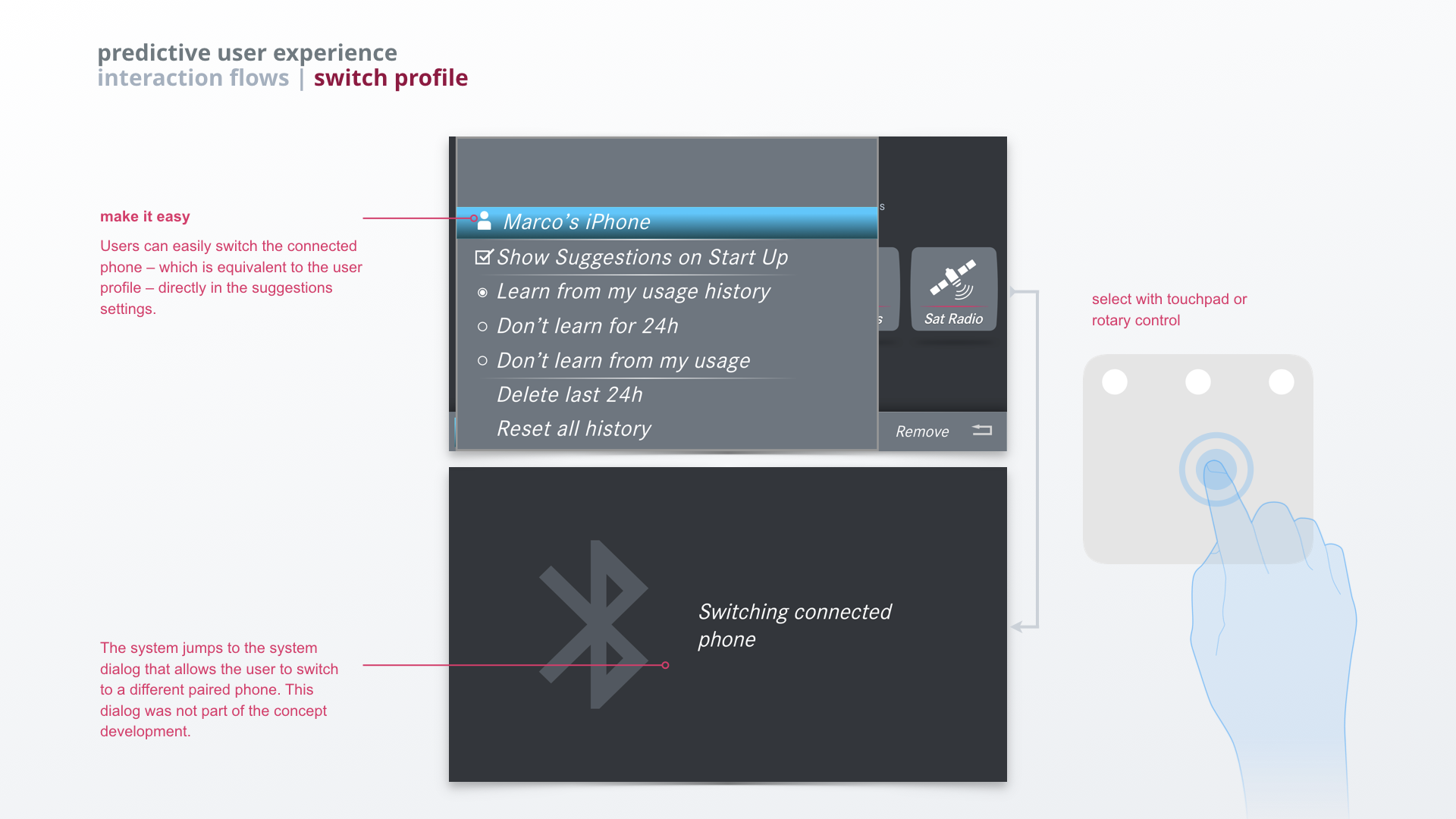
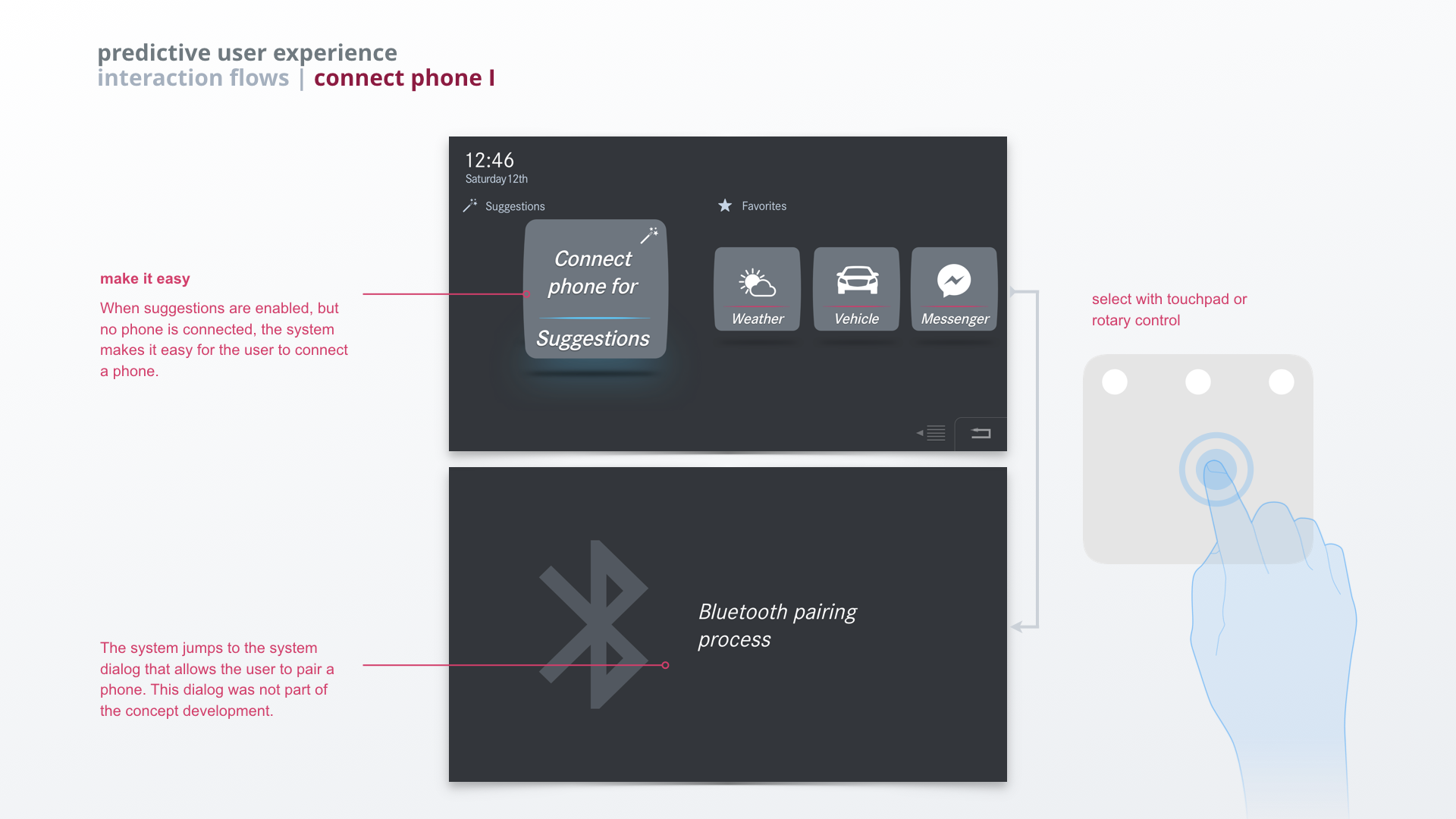
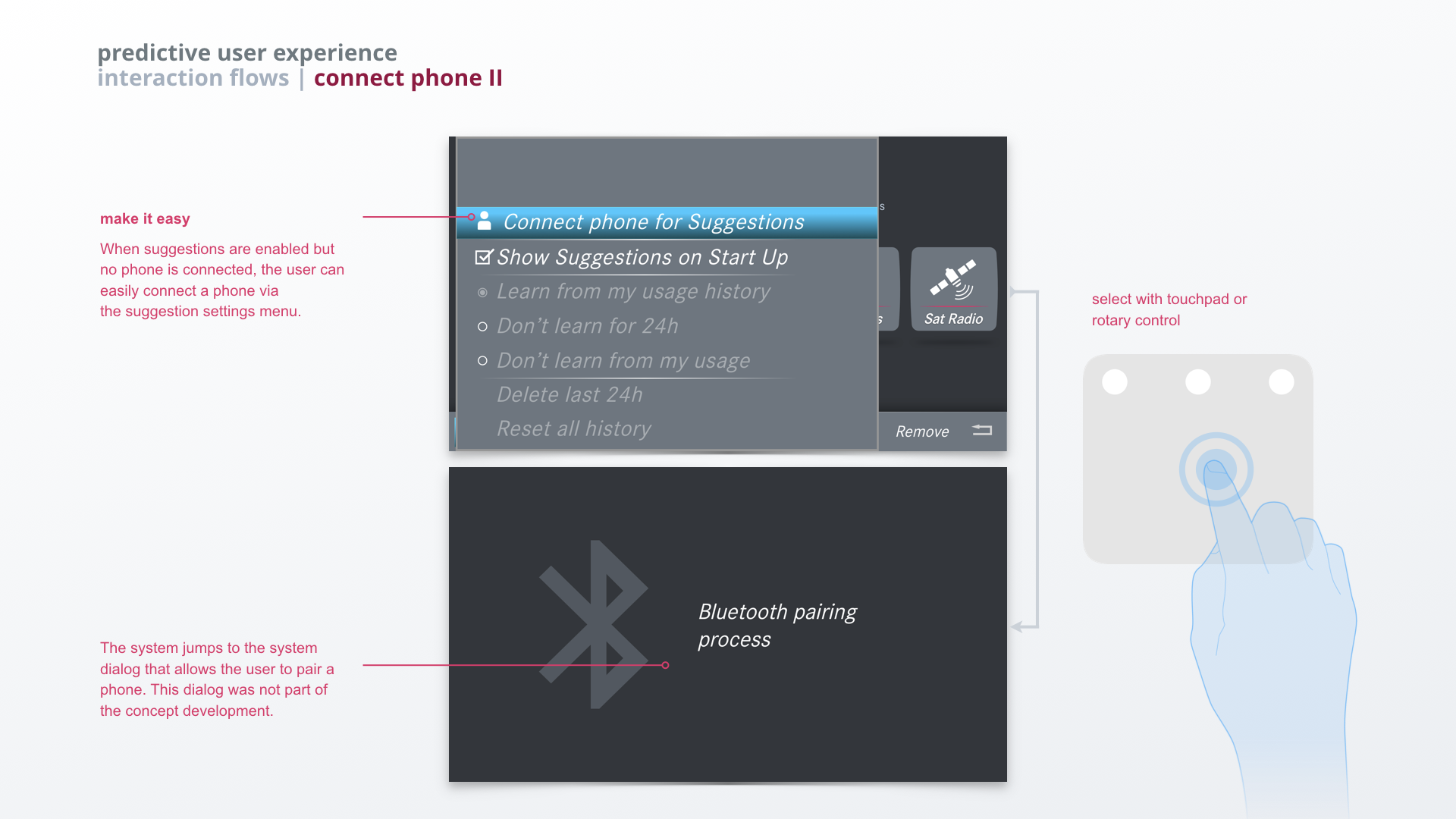
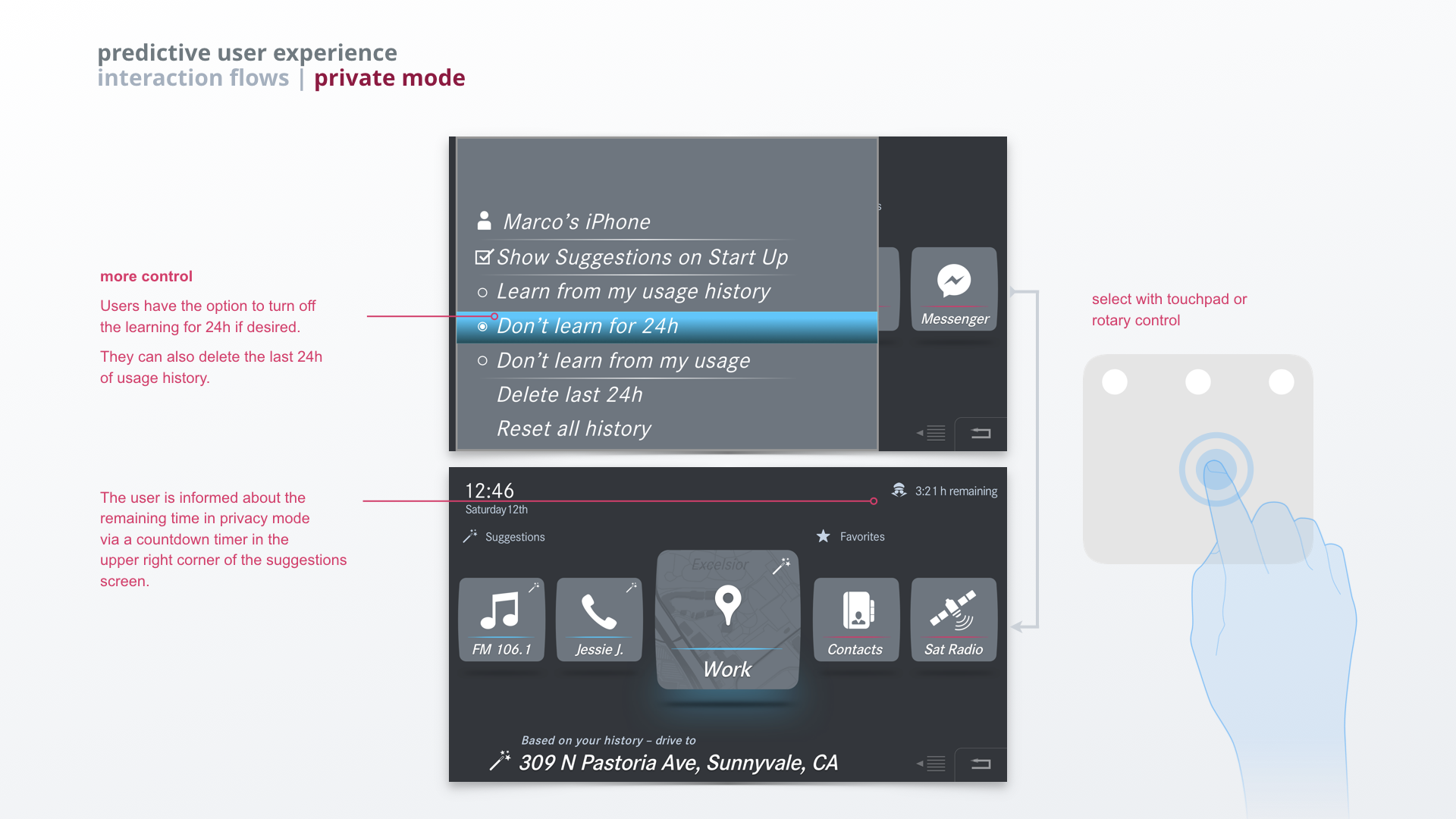
Unfortunately, not all UI features I deemed very important made the implementation time and cost cut. The most most costly tradeoff is probably that no map preview of suggested destinations is available and that the system only suggests destinations that were manually entered in the navigation system (instead of visited places).
And in the car...
Predictive User Experience
MBUX
Suggestions in the new MBUX touchscreen OS that was revealed at CES 2018. For easy discoverability suggestions are located on the home screen, in search, and in the media, navigation and contacts application.




















